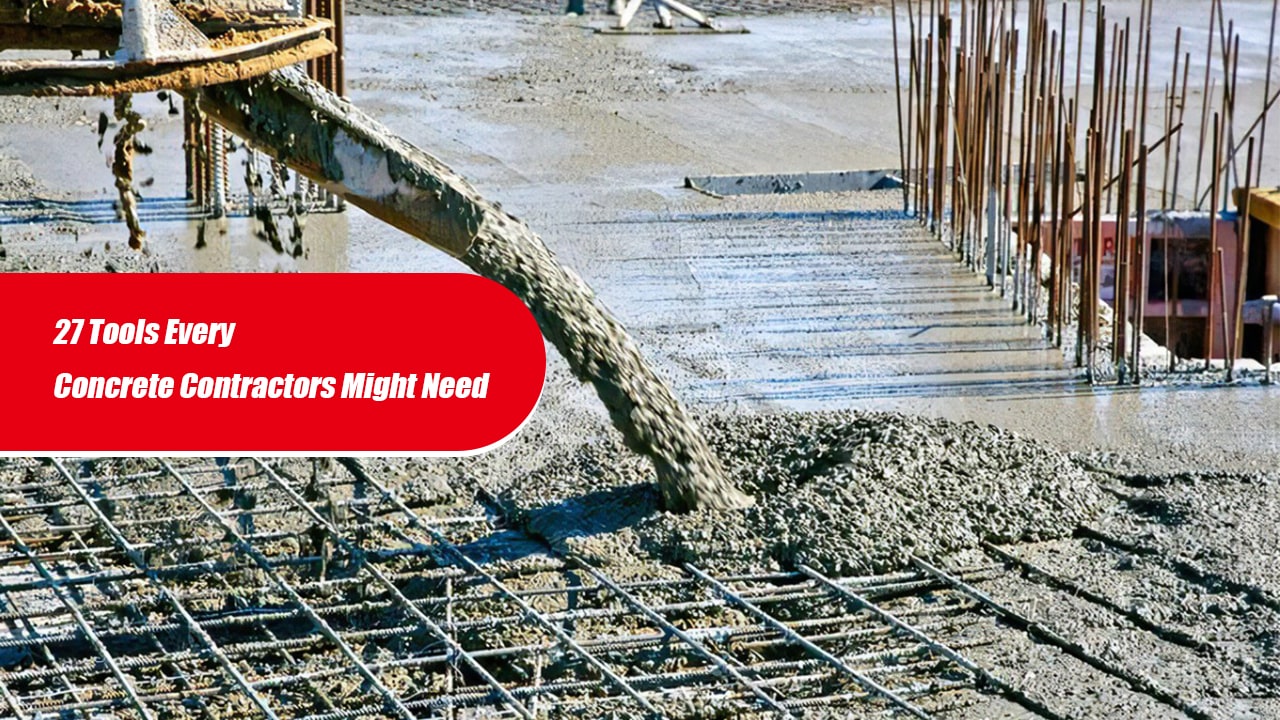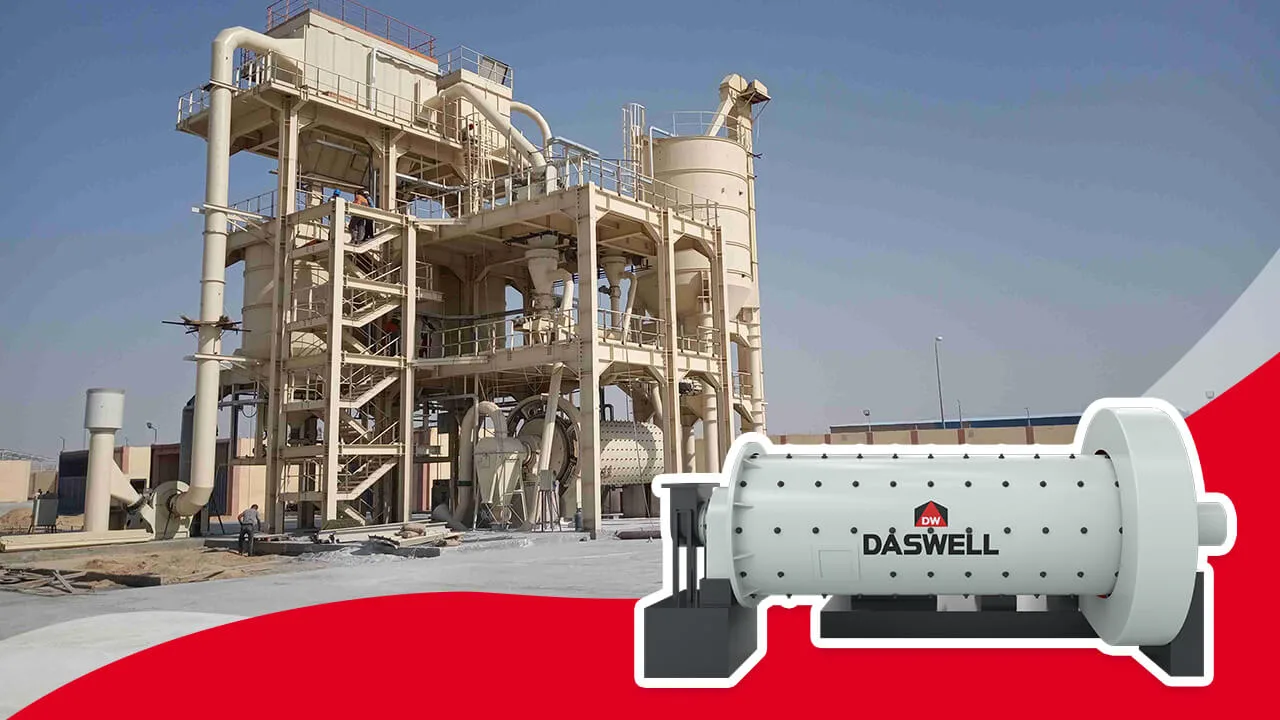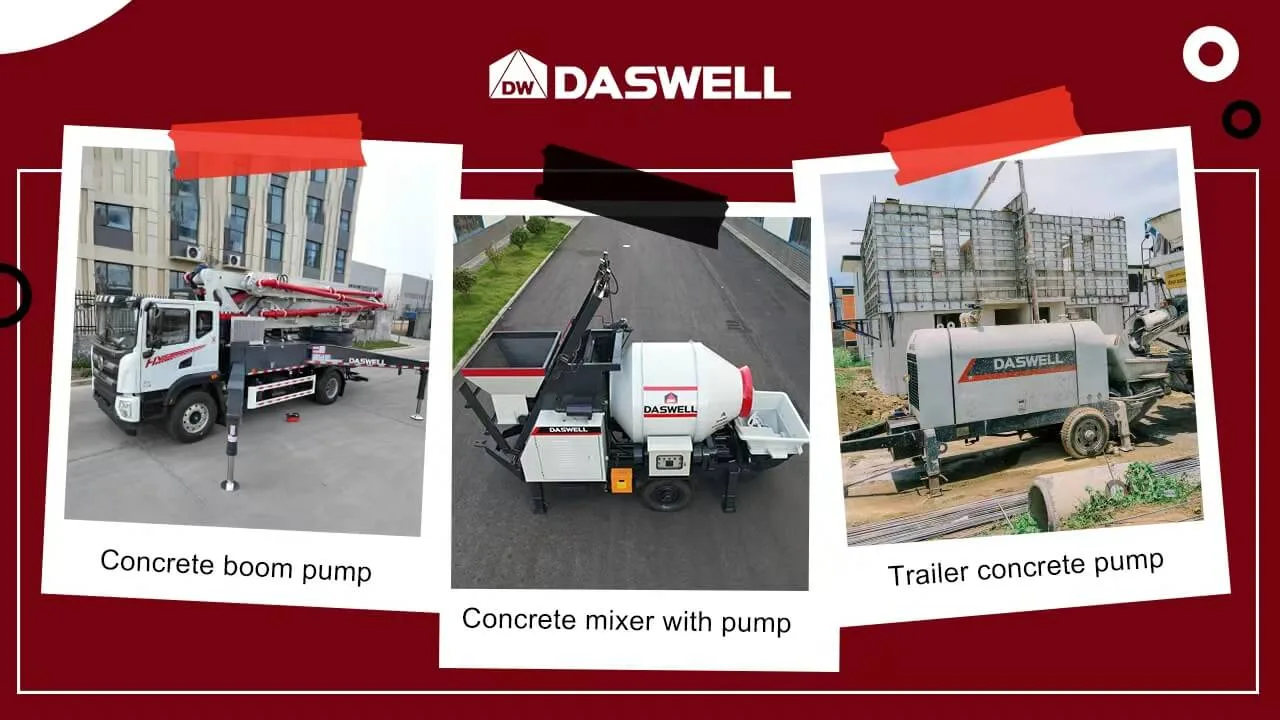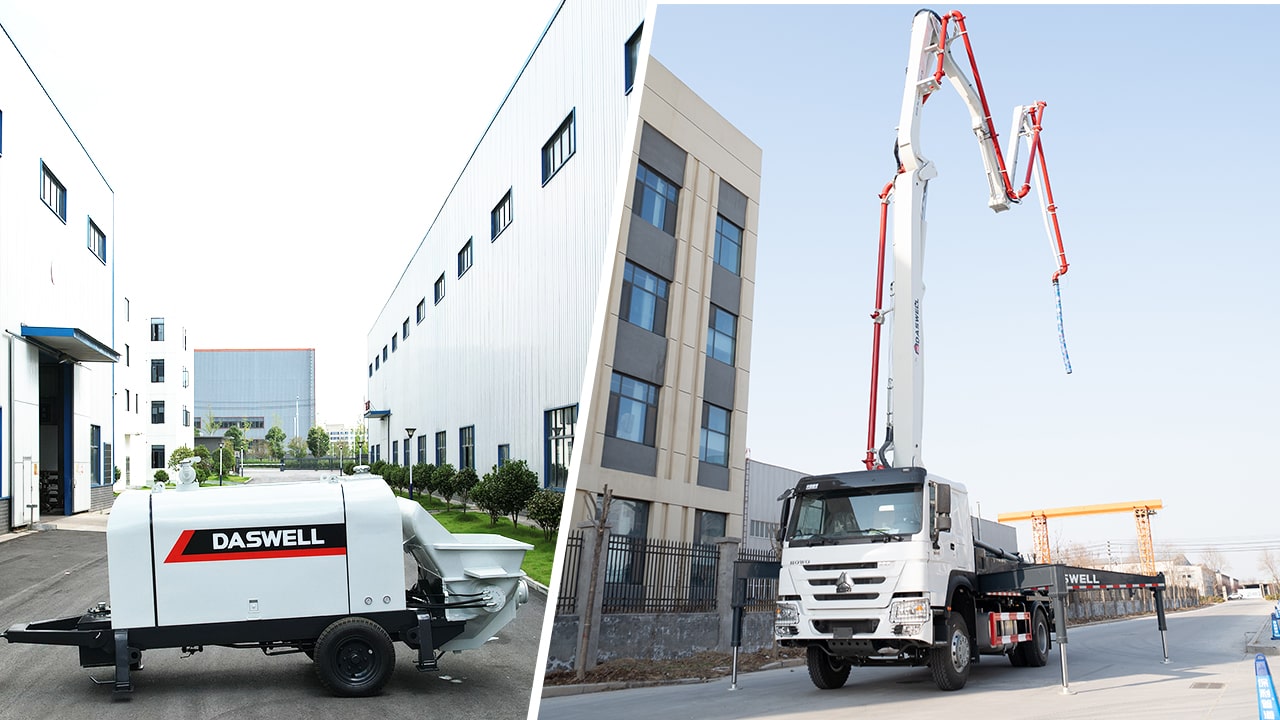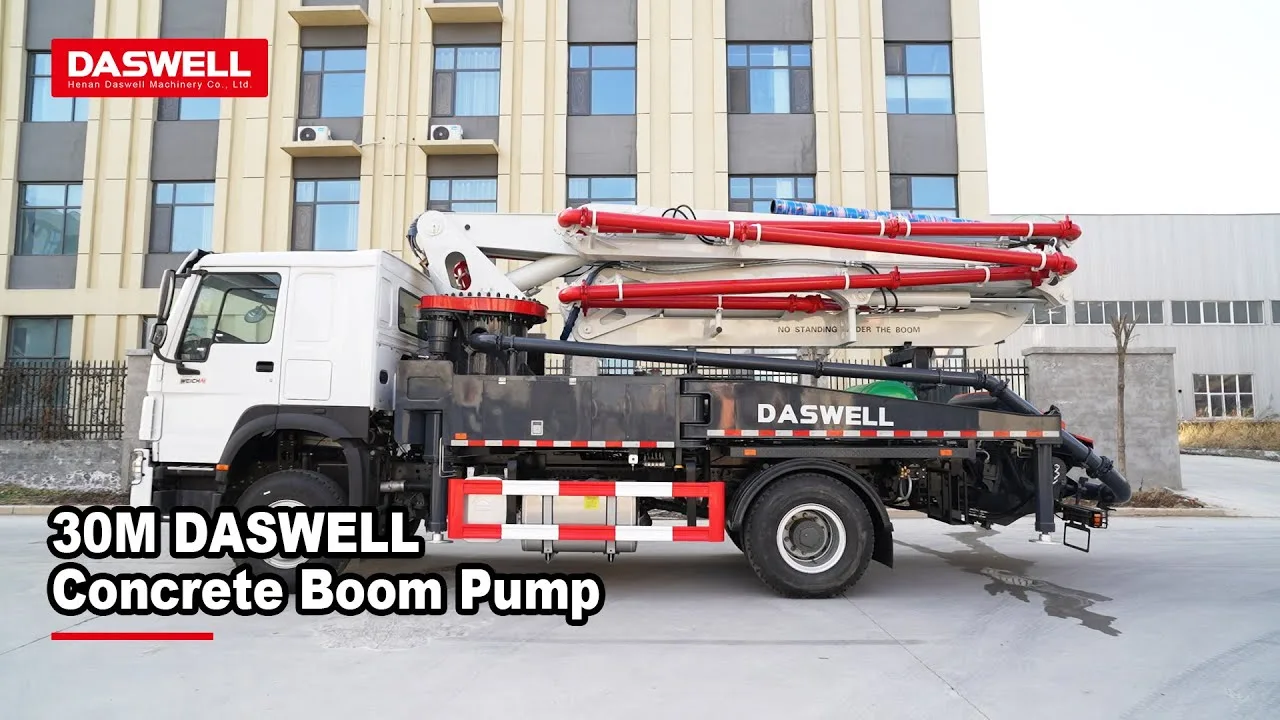What Size Excavator Do I Need? Small or Medium Size
Excavator is a kind of equipment mainly used to excavate materials such as soil, sand, rocks, etc., and it is also one of the most important and commonly used equipment in construction machinery. More and more customers want to invest in excavators for their own projects. So how to choose the right excavator has become the most concerned issue for customers.
If you want to buy a satisfactory excavator, you must first understand the excavators of different sizes and know your needs.
Size specification of excavator

Excavators can be divided into mini, small, medium and large excavators according to their size. Understanding the characteristics and differences of these excavators can help you choose more suitable equipment.
Mini excavator
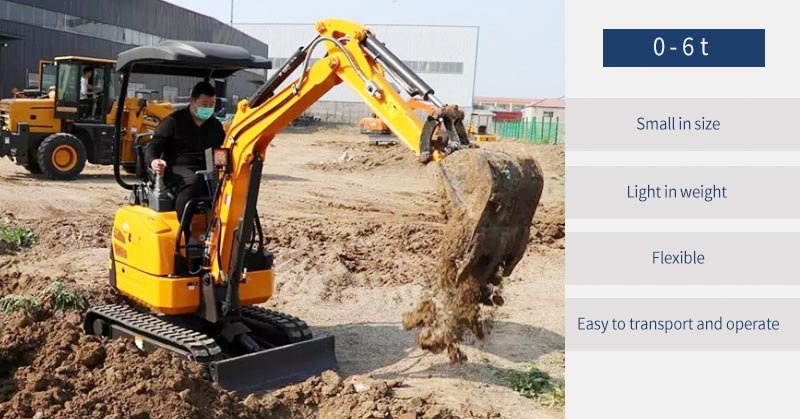
Mini excavators refer to excavators with a machine weight of 0 to 6 tons. It can easily reach tight spaces that cannot be reached by large excavators. So it is mainly suitable for small projects and narrow work sites.
Moreover, because the mini excavator is small in size, light in weight and flexible, it is easy to transport and operate. It is mainly used in small-scale urban construction, landscaping, road maintenance and other occasions that require small equipment.
Small excavator

Small excavators refer to equipment with a machine weight of 6 to 10 tons. Compared with mini excavators, it can provide more power and reach deeper digging depths, so it is often used in small and medium-sized projects.
Small excavators have the characteristics of small size, strong adaptability, strong mobility, high work efficiency, and low investment cost. It is mainly used in municipal engineering, water conservancy engineering, agricultural construction, road and bridge construction and other occasions.
Medium excavator
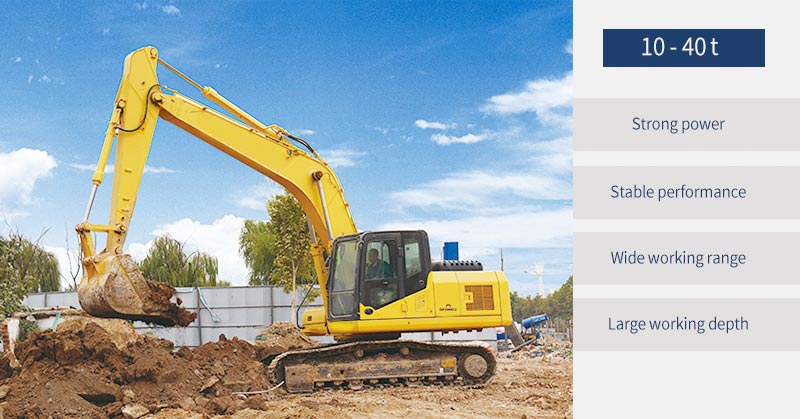
The machine weight of medium-sized excavators is generally between 10 and 40 tons. It usually has a larger digging depth and digging distance, can undertake a large amount of earthwork excavation and transportation, and is often used in large and medium-sized projects.
The medium-sized excavator has the characteristics of strong power, stable performance, wide working range and large working depth. It is mainly used in construction projects, ports, mines, bridges and other occasions.
Large excavator
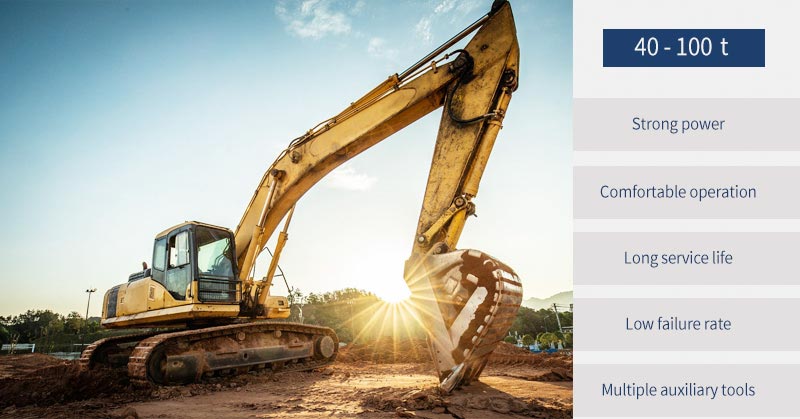
The weight of a large excavator is generally between 40 and 100 tons, and those larger than 100 tons are super-large excavators, which are often used in large-scale projects.
Large excavators are usually equipped with a variety of auxiliary tools, such as hydraulic hammers, blasters, wood grabbers, etc., so that they can meet different operating needs. It is mainly used in large-scale demolition, mining, tunnel construction, dam construction and other occasions.
What size excavator do I need?
Before choosing the right excavator, you need to understand the needs of the project, the working conditions of the construction site, the parameters of the excavator and other aspects. A detailed understanding of these aspects will help you choose a more suitable excavator so that you can achieve the best working results in the construction.
Scale of the project
If your project is a large-scale earthwork project, then you can choose an excavator of more than 30 tons. This size of excavator has a large bucket capacity, high bucket digging force, and higher work efficiency.
If your projects are mostly roads, bridges, etc., it is recommended to choose an excavator of about 20 to 30 tons. This size of excavator is relatively convenient to transfer, has strong adaptability, and can better meet the needs of different projects.
If your projects are mostly municipal engineering or urban construction, then excavators under 10 tons are more suitable for you. This size of excavator is small and easy to transport, allowing for flexible construction even on sites with limited space.
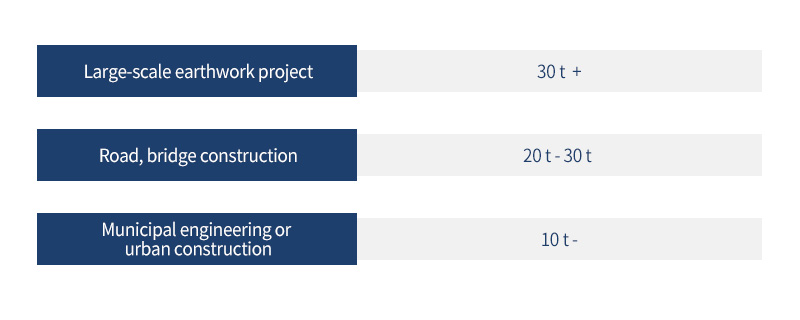
Working environment
The working environment on the construction site will also affect the choice of excavator.
For a construction site with a small construction space, it is necessary to choose a small or micro excavator; while a larger space can choose a large excavator.
For flat, solid ground, you can choose a larger model of excavator; for rough or soft ground, you need to choose a crawler excavator, because the crawler can disperse the weight of the whole machine and have better traction.
In projects with height restrictions, such as indoor excavation, under viaducts, etc., it is necessary to choose a compact excavator.
Performance of excavator
The performance of the excavator is one of the most important factors when purchasing an excavator.
- Digging depth: Digging depth is the most critical parameter in choosing an excavator model. You need to consider estimating the digging depth required for the project in advance. If you need to dig at different depths, the most commonly used digging depth should be the main one.
- Digging distance: The maximum digging distance of an excavator depends on the length of the excavator arm and the depth of the bucket. Generally speaking, the maximum digging distance of small excavators is about 5-6 meters, the medium-sized excavators is about 7-10 meters, and the large excavators can reach more than 20 meters.
- Lifting capacity: Because the excavator can also be used to move materials, its lifting capacity is also critical. Consider the lifting capacity of the excavator in terms of the maximum weight of the material you need to lift.
- Bucket capacity: The bucket capacity of different size excavators is different. The bucket capacity of small excavators is about 0.1-0.3 cubic meters, the medium-sized excavators is about 0.4-0.6 cubic meters, and the large excavators can reach 1 to 2 cubic meters.
- Hydraulic accessories: Excavators equipped with different hydraulic accessories can better meet the needs of different projects. Commonly used hydraulic accessories include breaker, auger, bulldozing blade, grapple, etc.
Budget
Budget is also a factor that customers are most concerned about. If the budget is sufficient, the types and configurations of excavators that customers can choose are more diverse. For example, you can choose a medium or large excavator. These excavators can adapt to more complex engineering operations, such as water conservancy projects, mining and so on.
On the contrary, if the budget is limited, the customer needs to consider the cost performance of the excavator, and can choose a more basic type of excavator, such as a mini or small excavator. This type of excavator is relatively cheap, easy to operate, and suitable for simple engineering operations, such as road laying and earthwork excavation.
If you don’t use excavators often, you can also consider leasing an excavator or buying a second-hand excavator.
In addition, factors such as the traffic conditions around the construction site and the manufacturer’s after-sales service will also affect the customer’s choice of excavator size.
Excavator components and functions
When purchasing an excavator, you need to have a general understanding of the components and functions of the excavator in order to choose more suitable equipment.
Crawler excavator is composed of cab, boom, chassis, engine, hydraulic system, bucket and other parts.

- Cab: The cab is the operation control center of the excavator, and all operations of the excavator are carried out by the driver in the cab. It is equipped with operation lever, foot pedal, seat, instrument panel and other equipment to facilitate the driver’s operation.
- Boom: The boom is the core part of the excavator, which is responsible for digging, shoveling, loading and other work. It is composed of boom, bucket rod, bucket and other parts.
- Chassis: The chassis is the walking part of the excavator, mainly composed of tracks, drive unit, brake, turntable and other parts. The chassis provides the excavator with the ability to move and steer, so that it can travel freely on the construction site.
- Engine: The engine is the power source of the excavator. It is responsible for providing power for various parts of the excavator and ensuring the normal operation of the excavator. Excavator engines usually use diesel engines.
- Hydraulic system: The hydraulic system is an important part of the excavator, which is responsible for controlling the up and down, telescopic, and rotation of the boom, as well as the opening, closing, and rotation of the bucket. The hydraulic system consists of hydraulic pumps, oil cylinders, hydraulic valves and other parts.
Hydraulic attachments of excavator
The use of excavator attachments can achieve more functions and the utilization rate of the machine is greatly improved. The following are some of the common attachments for excavators.
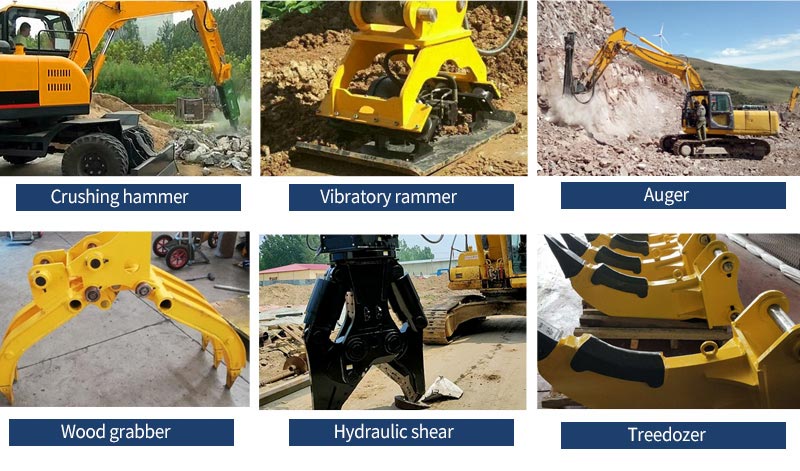
Crushing hammer: Crushing hammer is usually used to demolish concrete structures, stones, rocks and other hard materials, and is widely used in building demolition, road maintenance, mining and other occasions.
Vibratory rammer: The gravitational and vibratory force of the vibratory rammer is used on the ground to make the soil particles more compact, thus improving the compactness and stability of the foundation. It is usually used in road, airport runway, wharf, dam and other foundation projects.
Auger: Augers are usually used in foundation treatment, geotechnical exploration, and mining prospecting, and are capable of efficient drilling operations under different geological conditions.
Wood grabber: The wood grabber is a device that can grab and carry wood, usually used in forestry, wood processing and other occasions.
Hydraulic shear: A hydraulic shear is a device that cuts materials such as steel and concrete by hydraulic pressure. It is usually used in demolition of buildings, metal processing, waste recycling, etc.
In addition, the excavator also has accessories such as hydraulic hammers, rippers, and treedozers to choose from.
If you want to know more about excavators and other construction machinery, welcome to contact us!

